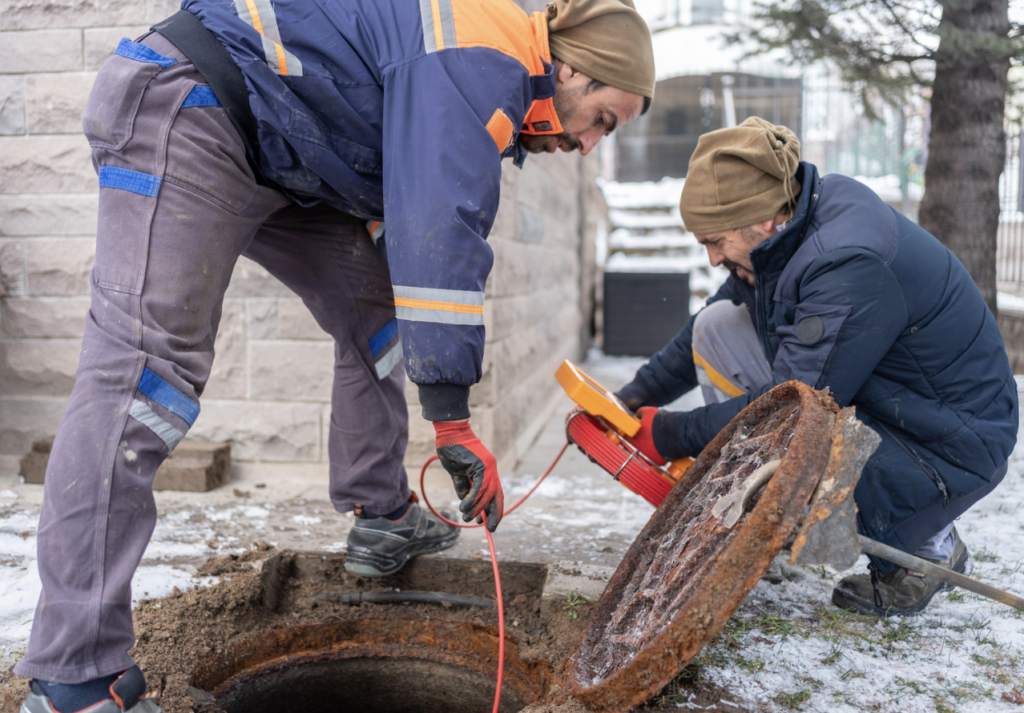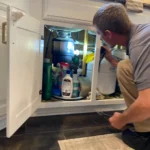Maintaining a well-functioning sewer line is essential for the health and safety of your home. Regular sewer line inspections are a proactive approach to identifying potential issues, ensuring efficient sewage flow, and preventing costly repairs. From detecting blockages to identifying structural damage, sewer maintenance is an investment in your home’s longevity. This guide explores the importance of sewer line inspections and how regular maintenance can safeguard your property.
The Role of Sewer Line Inspections in Home Maintenance
What Are Sewer Line Inspections?
Sewer line inspections involve examining the condition of your home’s sewer pipes using specialized equipment, often a small, flexible camera that plumbers guide through the pipes. This inspection process helps detect blockages, cracks, corrosion, tree root intrusion, and other issues that can compromise the sewer line’s integrity. By catching problems early, sewer line inspections allow homeowners to take preventive measures, minimizing the need for costly repairs.
Why Sewer Maintenance Matters
Sewer lines are essential for carrying wastewater away from your home, keeping your living space safe and clean. Without proper maintenance, however, these lines can become clogged or damaged, leading to backups, leaks, and even environmental hazards. Routine sewer maintenance helps prevent these issues, ensuring smooth sewage flow and minimizing health risks associated with sewage exposure.
Key Benefits of Regular Sewer Line Inspections
1. Early Detection of Blockages and Clogs
One of the primary benefits of regular sewer line inspections is the early detection of blockages and clogs. Over time, materials like grease, hair, food particles, and non-flushable items can accumulate in the sewer line, leading to slow drainage or even full blockages. Identifying these issues early allows homeowners to remove the buildup before it becomes a serious problem, preventing backups and water damage.
2. Identifying Tree Root Intrusion
Tree roots are a common cause of sewer line damage, as they naturally seek out moisture and can penetrate sewer pipes in search of water. Once inside, tree roots grow and expand, creating blockages and potentially causing pipes to crack or burst. During an inspection, plumbers can identify tree root intrusion and recommend solutions, such as root removal or using root barriers, to prevent further damage.
3. Detecting Leaks and Structural Damage
Sewer line inspections help detect leaks and structural damage that may not be visible to the naked eye. Cracks, corrosion, or shifting soil can weaken sewer pipes over time, leading to leaks or pipe collapses. Addressing these issues early helps avoid costly repairs and potential property damage. Regular sewer maintenance also reduces the risk of sewage leaks, which can create hazardous health conditions and environmental contamination.
4. Preventing Costly Repairs and Replacements
Regular sewer line inspections are a cost-effective way to avoid major repairs and replacements. By identifying issues early, homeowners can address minor problems before they worsen. For instance, fixing a small crack or removing a minor blockage is far less expensive than replacing an entire sewer line. Routine sewer maintenance is an investment that ultimately saves time, money, and stress.
5. Improving Overall Home Hygiene and Safety
Sewer backups can lead to unpleasant odors, bacterial growth, and exposure to harmful pathogens. Regular inspections help maintain a clean, safe environment by ensuring that the sewer system functions properly. This preventive approach to sewer maintenance reduces the risk of raw sewage entering your home, which can have severe health consequences.
Common Issues Found During Sewer Line Inspections
1. Accumulated Debris and Buildup
Accumulated debris, such as grease, hair, soap residue, and non-biodegradable materials, is a common issue found in sewer lines. These materials can form blockages, slowing water flow and leading to backups. During an inspection, plumbers can locate and clear this buildup, restoring normal flow and reducing the risk of clogs.
2. Cracks and Corrosion
Cracks and corrosion are signs of aging pipes and often indicate that a sewer line is vulnerable to leaks. Small cracks may not immediately affect the system, but they can expand over time, leading to larger structural issues. Inspections help detect these cracks early, allowing for repairs before the damage becomes extensive.
3. Tree Root Intrusion
Tree root intrusion is another frequent discovery during sewer inspections. Roots grow toward sewer lines due to the moisture inside, causing cracks, blockages, and structural damage. If left unchecked, root intrusion can cause pipes to collapse, leading to costly repairs.
4. Pipe Shifting or Sagging
Soil movement, erosion, or shifting foundations can cause pipes to shift or sag. When pipes misalign, it can create pockets where debris collects, leading to blockages. Sewer inspections identify any alignment issues, enabling plumbers to correct them before they affect the system’s functionality.
5. Bellied or Collapsed Sections
A pipe “belly” is a section of pipe that has sagged, often due to soil settling or poor installation. These bellied sections can trap wastewater, causing blockages and slowing the flow. In severe cases, pipes may collapse completely, disrupting the entire sewer line. Early detection of bellied or collapsed sections can prevent complete sewer failure.
How Sewer Line Inspections Are Conducted
Video Camera Inspection
Video camera inspections are the most effective method for examining sewer lines. Plumbers insert a waterproof camera attached to a flexible rod into the sewer line, which provides a real-time view of the pipe’s interior. This technology allows plumbers to accurately identify blockages, cracks, and other issues without invasive digging, making it an efficient and cost-effective approach.
Hydrostatic Pressure Testing
In some cases, hydrostatic pressure testing may be used to check for leaks in sewer lines. This method involves pressurizing the sewer line with water and monitoring the pressure levels to determine if there is a leak. Hydrostatic testing is generally used when a specific leak is suspected but is not visible through video inspection.
Dye Testing
Dye testing involves introducing a special dye into the plumbing system to trace leaks or breaks. Plumbers monitor where the dye appears, identifying areas of concern. This method is often used in combination with video inspections to pinpoint leaks or weaknesses in the system.
How Often Should Sewer Line Inspections Be Conducted?
Annual Inspections
For most homes, an annual sewer line inspection is sufficient to catch potential issues early. Routine inspections help maintain system functionality and ensure that any problems, like buildup or minor cracks, are addressed before they escalate. Regular sewer maintenance reduces the risk of emergencies and keeps your sewer line in optimal condition.
Inspections After Major Landscaping Projects
If you’ve recently completed landscaping projects or planted new trees, scheduling a sewer line inspection is wise. Landscaping changes can disrupt the ground, potentially damaging sewer lines or increasing the risk of root intrusion. An inspection ensures that recent landscaping hasn’t impacted the sewer system.
Inspections for Older Homes
Homes with older plumbing systems benefit from more frequent inspections. Aging pipes are more prone to corrosion, cracks, and structural issues, so regular monitoring is essential to prevent major sewer problems. If your home is over 30 years old, consider scheduling inspections biannually.
Steps to Take if Sewer Line Issues Are Found
1. Consult a Professional Plumber
If your sewer inspection reveals issues, consult a professional plumber to determine the best course of action. A licensed plumber will assess the problem’s severity, recommend solutions, and guide you through the repair or replacement process.
2. Schedule Cleaning and Maintenance
For minor issues, such as debris buildup or small blockages, scheduling a professional sewer cleaning can restore functionality. Hydro jetting, a method that uses high-pressure water to clear pipes, is often used to remove stubborn buildup and prevent future clogs.
3. Repair or Replace Damaged Sections
For more severe issues, such as cracked or bellied pipes, repairs or replacements may be necessary. Trenchless repair methods, like pipe lining or pipe bursting, offer a less invasive solution, restoring the pipe’s integrity without extensive excavation.
4. Install Preventive Measures
If tree root intrusion or soil movement caused the sewer line damage, consider installing preventive measures. Root barriers prevent tree roots from reaching sewer lines, while backflow valves can prevent sewer backups. Taking proactive steps can protect your sewer system from future problems.
Benefits of Preventive Sewer Maintenance
Reducing the Risk of Sewer Backups
Preventive sewer maintenance minimizes the risk of sewage backups, which can lead to unpleasant odors, health risks, and property damage. Regular inspections and cleaning keep your sewer line clear and functional, reducing the chances of unexpected backups.
Extending the Lifespan of Your Sewer System
Routine inspections and maintenance help extend the life of your sewer system by addressing minor issues before they lead to more severe damage. Proactive sewer maintenance is an investment in your home’s plumbing, ensuring a well-functioning system for years to come.
Enhancing Property Value and Market Appeal
Homes with well-maintained sewer systems have higher market appeal, as buyers appreciate the assurance of a functioning sewer line. Regular sewer line inspections can enhance your property’s value, making it a smart choice for homeowners considering selling in the future.
Conclusion: Invest in Regular Sewer Line Inspections
Regular sewer line inspections are an essential part of home maintenance, helping prevent blockages, leaks, and structural issues that can lead to costly repairs. Through routine sewer maintenance, homeowners can ensure smooth wastewater flow, maintain property safety, and enhance their home’s value. Investing in sewer line inspections not only safeguards your home’s plumbing but also provides peace of mind.
FAQs
1. How often should sewer line inspections be conducted?
Most homes benefit from an annual inspection. Older homes or properties with recent landscaping projects may require more frequent inspections to monitor for damage.
2. Can sewer line inspections prevent costly repairs?
Yes, inspections identify early signs of damage, like blockages or cracks, allowing homeowners to address these issues before they worsen and require major repairs.
3. What are the signs of a damaged sewer line?
Common signs include slow drainage, foul odors, gurgling sounds in drains, and wet spots in the yard. These symptoms often indicate a sewer issue that needs inspection.
4. How do tree roots affect sewer lines?
Tree roots can infiltrate sewer lines in search of moisture, causing blockages, cracks, and even pipe collapses. Regular inspections help detect and address root intrusion early.
5. Are sewer line inspections invasive?
No, most inspections use non-invasive video camera technology to assess the sewer line, providing a detailed view without the need for extensive digging or excavation.











